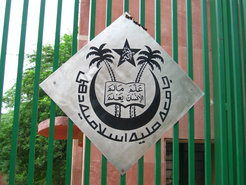The Emotions of New Education. A Transnational History of Jamia Millia Islamia
Margrit Pernau

The Jamia Millia Islamia, the National Islamic University, was founded in 1920 as part of the Gandhian non-cooperation movement, and settled in Delhi soon after. Unlike other national universities, it survived not only the initial phase, but is still thriving. This is not least due to the fact that a new generation, schooled in Berlin, took over the leadership of the educational complex (which included educational services ranging from kindergarten to higher education). The project focuses on two research questions: First, it aims at conceptualizing Bildungsforschung as a history of emotions—what the Jamia wanted was less to convey a canon of knowledge than to shape the students’ character and habitual ways of feeling by taking up new education’s approach of teaching through handicraft and work. Second, the pedagogical ideas at the core were developed in an intense exchange not only with Gandhi, but also with the work of German and American educators (Spranger, Kerschensteiner, Dewey, Kilpatrick). While much research has already been devoted to global intellectual history, we still know little about how emotions moved between different regions.
Sources for this project range from the Jamia's journals to speeches and reflective texts, to the day-to-day accounts of the institution’s life. A first article on the Jamia’s children’s journal has been accepted for publication, another one on the navigation of the Jamia between the city and the nationalist ideal of the village promoted by Gandhi is under review (“At a distance to the city. Jamia Millia Islamia’s foundational years,” Shifting Landscapes: Education and Urban Transformations in India, ed. Geetha B. Nambissan, Nandini Manjrekar, Shivali Tukdeo, Indra Sengupta).
The final results of this project will be published in the shape of two books. The first, Aapaa Jaan. The Many Lifeworlds of Gerda Philipsborn, is under contract with Speaking Tiger (Delhi). It recounts the biography of a young Jewish woman from Berlin, whom the leading figures of the Jamia met while they were studying in Berlin in the early 1920s. They became close friends, and Gerda Philipsborn joined them in Delhi in 1932 to become part of the Jamia: its Aapa Jaan, the beloved elder sister. The second book, Jamia. A history of emotions, is conceived as an academic monograph and will follow the history of the Jamia from 1920 to 1947.
Key Reference


